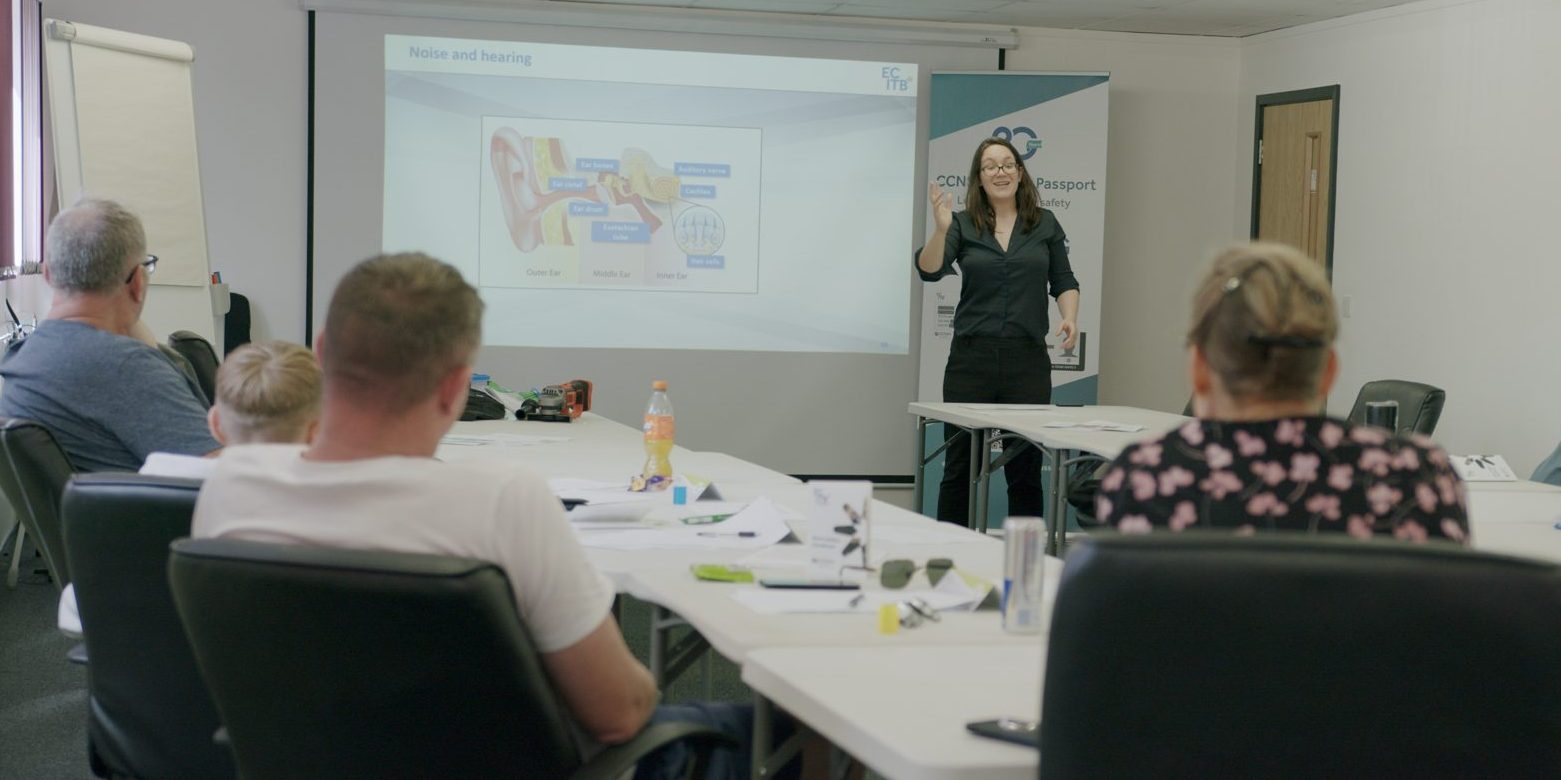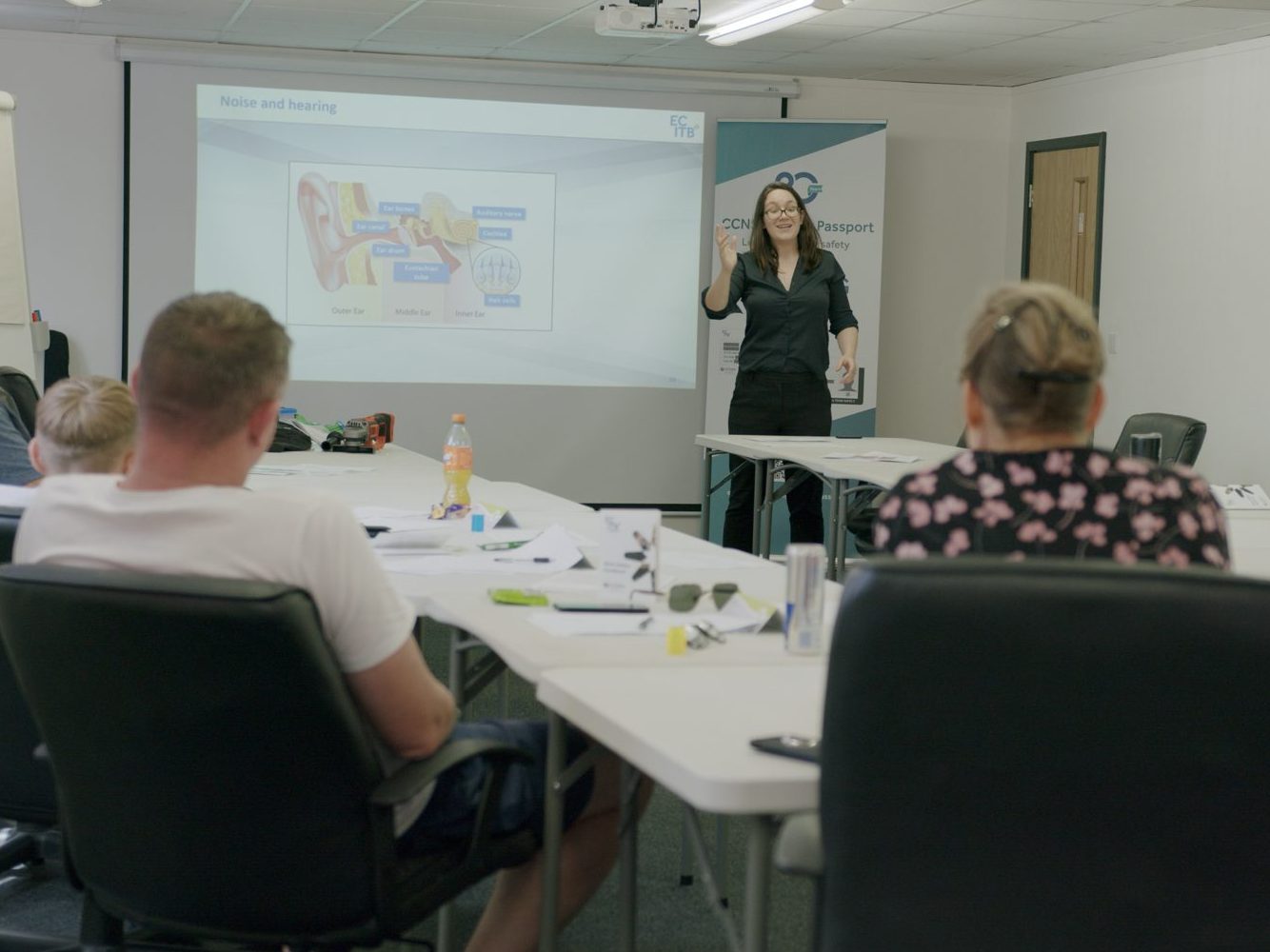Working in areas with high levels of noise in the engineering construction industry (ECI) without proper protection can cause irreversible damage to your hearing. Even at lower levels noise can cause disturbance and stress.
Workers also need to be aware of the harmful effects of vibration and how prolonged use of vibrating tools can lead to hand-arm vibration syndrome (HAVS), which can cause symptoms like numbness, tingling and reduced grip strength.
As part of a campaign focused on health and safety, the Engineering Construction Industry Training Board (ECITB) has published a series of tips to help create a better safety culture in the ECI, including safety measures to help minimise the risks around noise and vibration.
With health and safety training being one of the key contributors in helping reduce accidents and lost-time incidents on sites, the ECITB’s industry-led CCNSG (Client Contractor National Safety Group) Safety Passport course helps to develop a positive health and safety culture, where safe and healthy working becomes second nature to everyone.
Here are a series of tips from the CCNSG course to help keep you and your colleagues safe in the ECI. (Pictured main: CCNSG course attendees learning about noise control at GSS Training)
Noise control
- Avoid making unnecessary noise.
- Correctly use all equipment and procedures designed to reduce noise exposure levels, e.g. noise enclosures, acoustic covers, silencers, etc.
- Always wear the ear protectors provided when required to do so, e.g. in designated and marked Ear Protection Zones. Make sure that the ear protectors are always fitted correctly and are properly looked after.
- Promptly report all situations which may lead to increases in noise exposure levels, such as defects in equipment or changes in work routine.
- Participate fully in training sessions.
- Advise management immediately of any problems caused by noise at work.
Vibration
- Avoid using vibrating equipment and vehicles or reduce their use as much as possible.
- Cooperate fully with any vibration assessments that are being carried out.
- Correctly use all equipment and procedures designed to reduce exposure levels, such as correct techniques for equipment use, work task rotation, reduction of grip force, maintenance of good blood circulation and correct selection of equipment for the task.
- Promptly report all situations which may lead to increases in vibration exposure levels, such as defects in equipment or changes in work routine.
- Participate fully in training sessions which detail the procedures to follow to avoid the harmful effects of vibration.
- Inform the company of any discomfort you may feel when using vibrating equipment.
The ECITB plays a vital role in ensuring Britain has workers with the skills industry needs both now and for the future.
This includes the essential health and safety skills and knowledge to keep both workers and their colleagues safe when operating in some of the most safety-critical environments in industry.
Find out more about the CCNSG Safety Passport and how to book a course
Sign up for updates
Your information will be used to subscribe you to our e-newsletter.
For more information, please see our Privacy Notice.


